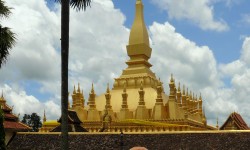Bagan in central Burma is one of the world’s greatest archeological places, a sight to rival Machu Picchu or Angkor Wat but – for the time being at least – without the travelers.
Bagan was largely built from the 9th to 13th centuries and considered as the capital of the Pagan kingdom. During its height, it boasted 10,000 Buddhist temples. Nowadays, the number remaining is estimated to be between 4,400 and 2,000. You should spend about two days for Bagan, even if you’re not a temple buff. Indochina travel Myanmar
The climate within Myanmar can remarkably change, so if you’ve got a particular journey, you’re keen on visiting, it’s worth checking ahead to see how it’s affected by the seasons.
Bagan is smack bang in the center of Myanmar’s best known microclimate, the famous ‘dry region’. This rain shadow zone lying between the Shan Plateau to the east and the low coastal ranges to the west stretches south from Mandalay, taking in much of these central plains. Myanmar travel packages
Bagan and Mandalay are the hottest, driest areas – temperatures can peak at over 40°C – but rainfall is still light here in the wet season, and with more bearable temperatures this is the best time to visit Myanmar to avoid the winter.
Bagan is hot all year round. The best time to visit Bagan is from November to February, when temperatures get 30oC (86oF). Avoid March to May, when temperatures can get 43oC (110oF). Rainfall is highest in June and October. If you can visit during a full moon, it will be a popular time for local festivals.
For the coolest temperatures and cloud-free skies, November to February is your best bet, but bear in mind this is high season. Not only are rooms will be hard to book and more expensive, but Bagan will be heaving with crowds.
Some of the best famous temples can get very crowded in the high season, especially for sunrise and sunset visits since the number of stupas that you can really climb up, thus getting a beautiful view, is diminishing all the time.
Travel lovers.
Read more:












